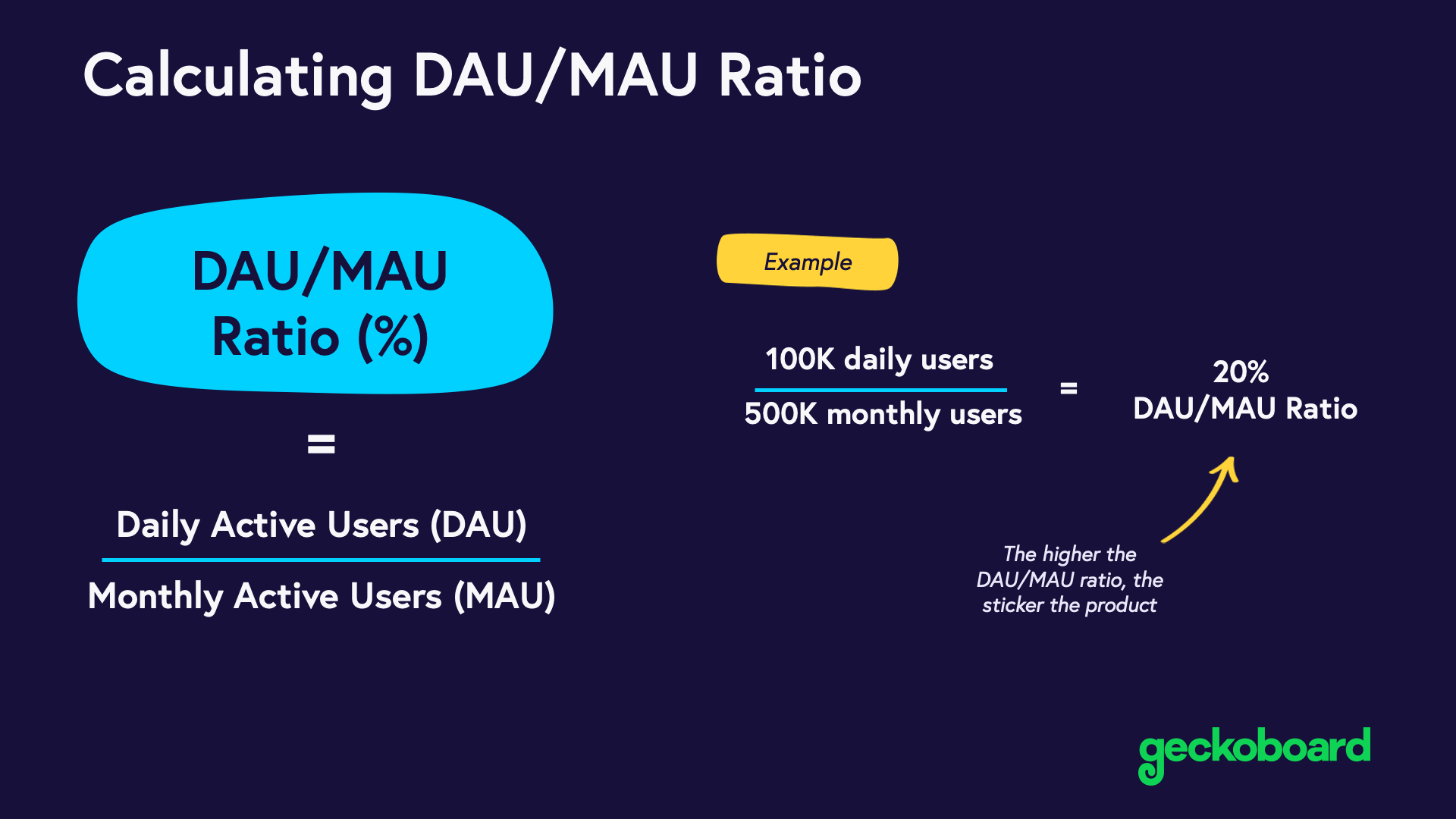DAU/MAU Ratio
What is DAU/MAU Ratio?
The Daily Active Users (DAU) to Monthly Active Users (MAU) Ratio measures the stickiness of your product - that is, how often people engage with your product. DAU is the number of unique users who engage with your product in a one day window. MAU is the number of unique users who engage with your product over a 30-day window (usually a rolling 30 days).
The ratio of DAU to MAU is the proportion of monthly active users who engage with your product in a single day window.
Advice from VCs: Why DAU/MAU Ratio is critical
“If there’s one number every founder should always know, it’s the company’s growth rate. That’s the measure of a startup. If you don’t know that number, you don’t even know if you’re doing well or badly. The best thing to measure the growth rate of is revenue. The next best, for startups that aren’t charging initially, is active users. That’s a reasonable proxy for revenue growth because whenever the startup does start trying to make money, their revenues will probably be a constant multiple of active users.” - Paul Graham, VC and Co-Founder of Y Combinator
“The metrics we start with are total active users (monthly/weekly/daily) it’s growth, alongside any ratios like DAU/MAU or DAU/WAU. These help us understand how frequently active people are in using the products.” - Josh Elman, Partner at Greylock Partners
“I would argue that the single most telling metric for a great product is how many of them become dedicated, repeat users.” - Andrew Chen, Angel Investor
How to calculate DAU/MAU Ratio:
(#) Daily active users / (#) Monthly active users = (%) DAU/MAU Ratio
The key to calculating DAU/MAU Ratio is defining what ‘active’ is for your product. This could be anything from a purchase (for ecommerce or mobile apps), pages viewed/videos watched/comments (for media/publisher), or product login/usage (for SaaS companies or mobile apps).
Once you’ve defined ‘active’ for your product, determine the number of unique active users in a 24-hr period and also the number of unique active users over the past 30 days (usually based a rolling 30 days). With these two metrics, you can divide DAU by MAU to get the ratio percentage.
A variation of this metric is to swap MAU with the total number of unique weekly active users (WAU). This gives you the DAU/WAU Ratio.

Pros:
This ratio is particularly helpful for understanding how valuable your product is to users. It provides a snapshot of user retention. For early stage startups, this is a helpful metric for evaluating traction and potential revenue.
Using the ratio - instead of DAU or MAU alone - gives you the necessary context to understand the actual level of engagement.
Cons:
One downside to the DAU/MAU Ratio is that you can’t see which users are being retained and which users are churning. This is where a cohort retention analysis is useful. A cohort can be any similar group of users you define - often categorized by month. You can learn more about user cohorts here, and here.
Relevant Startup Metrics and KPIs:
If you’re adding DAU/MAU Ratio to your Startup CEO dashboard, consider tracking these related startup metrics for context.
- User Cohort Retention
- Customer Acquisition Cost (CAC)
- Customer Churn Rate
Industry Benchmarks
Of course, the closer to 100% engagement your product has, the better. When it comes to average benchmarks though, the ‘norm’ varies significantly between products, type of engagement, and industry. Look at the DAU/MAU Ratios for companies with a similar type of product or in the same industry.
Sequoia tweeted the standard DAU/MAU ratio is 10-20% with only a handful of companies over 50%.
Additional Notes
“When we assess a growing startup, the number one thing we look for is deeply retained usage. There are lots of ways for something to grow, but growth without deepening engagement is just like empty calories. So core usage alongside a path to growth is all that matters to us.” - Josh Elman, Partner at Greylock Partners
Want to create a startup CEO dashboard using this metric? Check out this example CEO Metric Dashboard.
